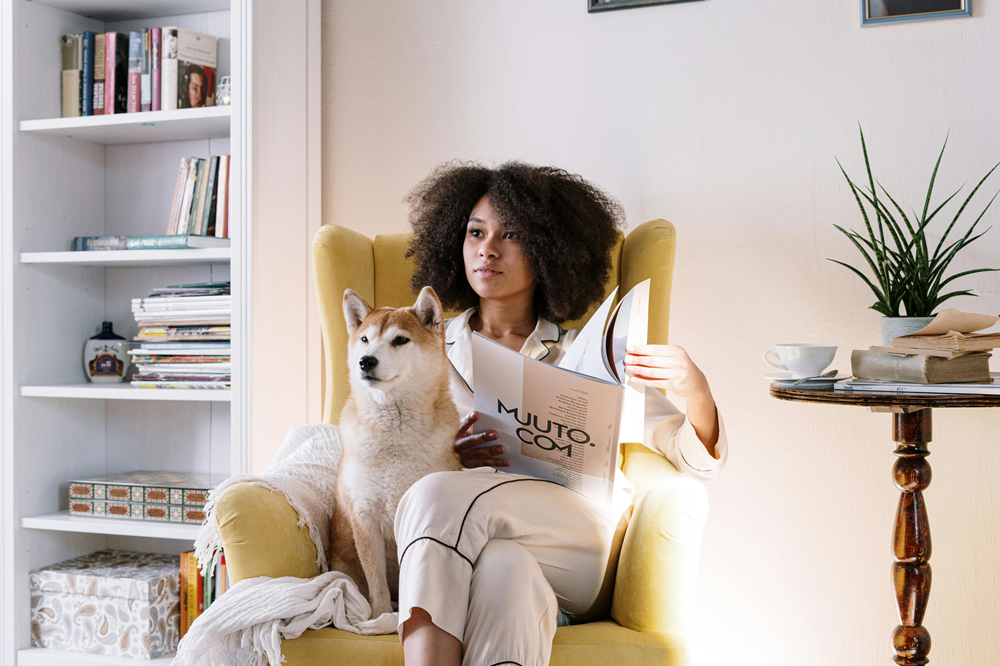GET 15% OFF WITH THE PUPPY BUNDLE
GET 15% OFF WITH THE PUPPY BUNDLE
Shop all

Pet Safety at Home: How to Dog-Proof Every Room and Create a Secure Environment
October 15, 2024 3 min read
Imagine this: You've had a long day at work, and you're looking forward to relaxing at home with your furry best friend. As you walk through the door, you're greeted with a scene of chaos: your dog is sitting by a shattered vase, a chewed-through power cord dangling nearby. Panic sets in as you realize the potential danger your pet has been in.
These accidents can be dangerous for your dog and stressful for you. It's heartbreaking to see your beloved pet hurt, and the financial and emotional consequences of these incidents can be significant. That's why creating a safe and secure home environment for your dog is essential.
Here are some tips on how to dog-proof your home room by room and additional safety tips to keep your furry friend safe.
Dog-Proofing Your Home Room by Room
- Living Room:
- Secure furniture and electronics to prevent your dog from knocking them over. Use furniture straps or safety cables to anchor large, heavy items to the wall.
- Cover sharp corners and edges with corner guards or furniture covers to protect your dog from injuries.
- Remove toxic plants from your living room and keep cleaning supplies out of reach.
- Kitchen:
- Keep food and treats out of reach, as even small amounts can be harmful to your dog. Store food in airtight containers on high shelves or in locked cabinets.
- Lock cabinets and drawers containing potentially harmful substances, such as cleaning products, medications, and pesticides.
- Use a pet gate to restrict your dog's access to the kitchen, especially when you're not able to supervise them.
- Bedroom:
- Keep medications and personal items out of reach to prevent your dog from ingesting something toxic. Store these items in a locked cabinet or drawer.
- Be cautious of bedding and pillows that may be a choking hazard. Remove any loose bedding or pillows that your dog could chew on.
- Bathroom:
- Keep toilet lids closed and use a toilet lock to prevent your dog from drinking contaminated water.
- Secure cleaning supplies and medications in a locked cabinet or closet.
- Be aware of the dangers of human medications for dogs. Many common medications can be toxic to pets, even in small doses.
Additional Safety Tips
- Fence your yard to prevent your dog from wandering off and getting lost. Ensure the fence is secure and there are no gaps or holes that your dog can escape through.
- Be cautious of toxic plants and chemicals in your yard that can harm your dog. Research common toxic plants in your area and remove them from your yard.
- Keep your dog on a leash when outside to prevent them from chasing cars or other animals. This will also help you keep track of your dog and ensure their safety.
Creating a Safe Space for Your Dog
- Designate a Safe Space: Create a designated safe space for your dog where they can feel secure and comfortable. This could be a dog crate, a dog bed, or a specific area in your home.
- Provide Adequate Enrichment: Ensure your dog has plenty of toys and activities to keep them entertained and mentally stimulated. This can help prevent boredom-related behaviors, such as chewing or digging.
- Socialize Your Dog: Socialize your dog from a young age to help them become well-adjusted and less likely to exhibit destructive behaviors.
Invest in your pet's safety. It might seem like a hassle, but the time and effort you put into dog-proofing your home will be well worth it. A safe home means a happier, healthier dog. Start small and gradually implement these changes. Don't try to do everything at once. Start with one room at a time and gradually make your home more pet-friendly.
Be patient and persistent. It may take some time to get your dog used to a new environment or routine. Be patient and consistent with your training efforts. Remember, you're not alone. Many pet owners face similar challenges. Don't hesitate to reach out to friends, family, or a veterinarian for support and advice.
By taking these steps, you can create a safe and secure home for your dog, allowing them to live a happy and healthy life.





